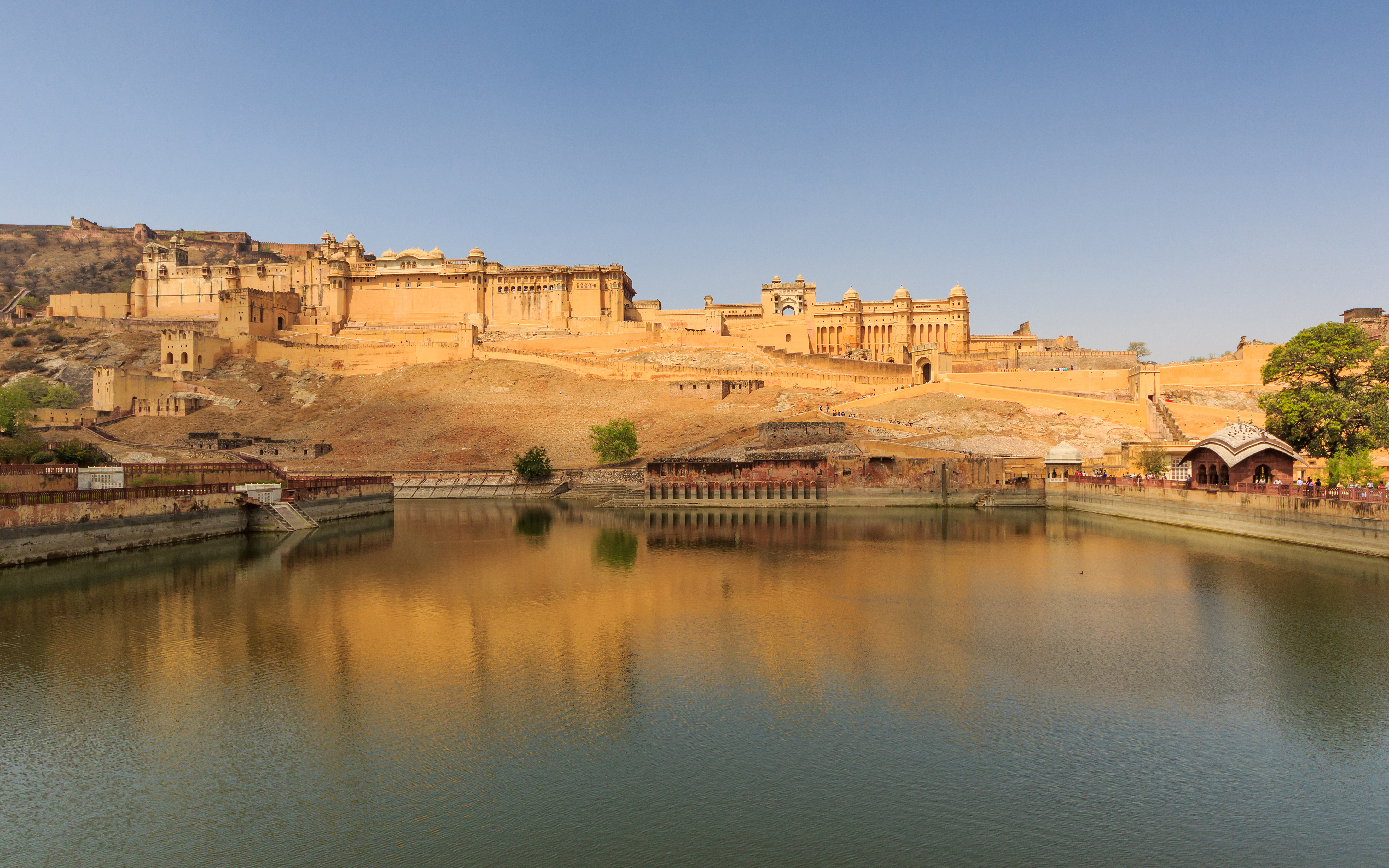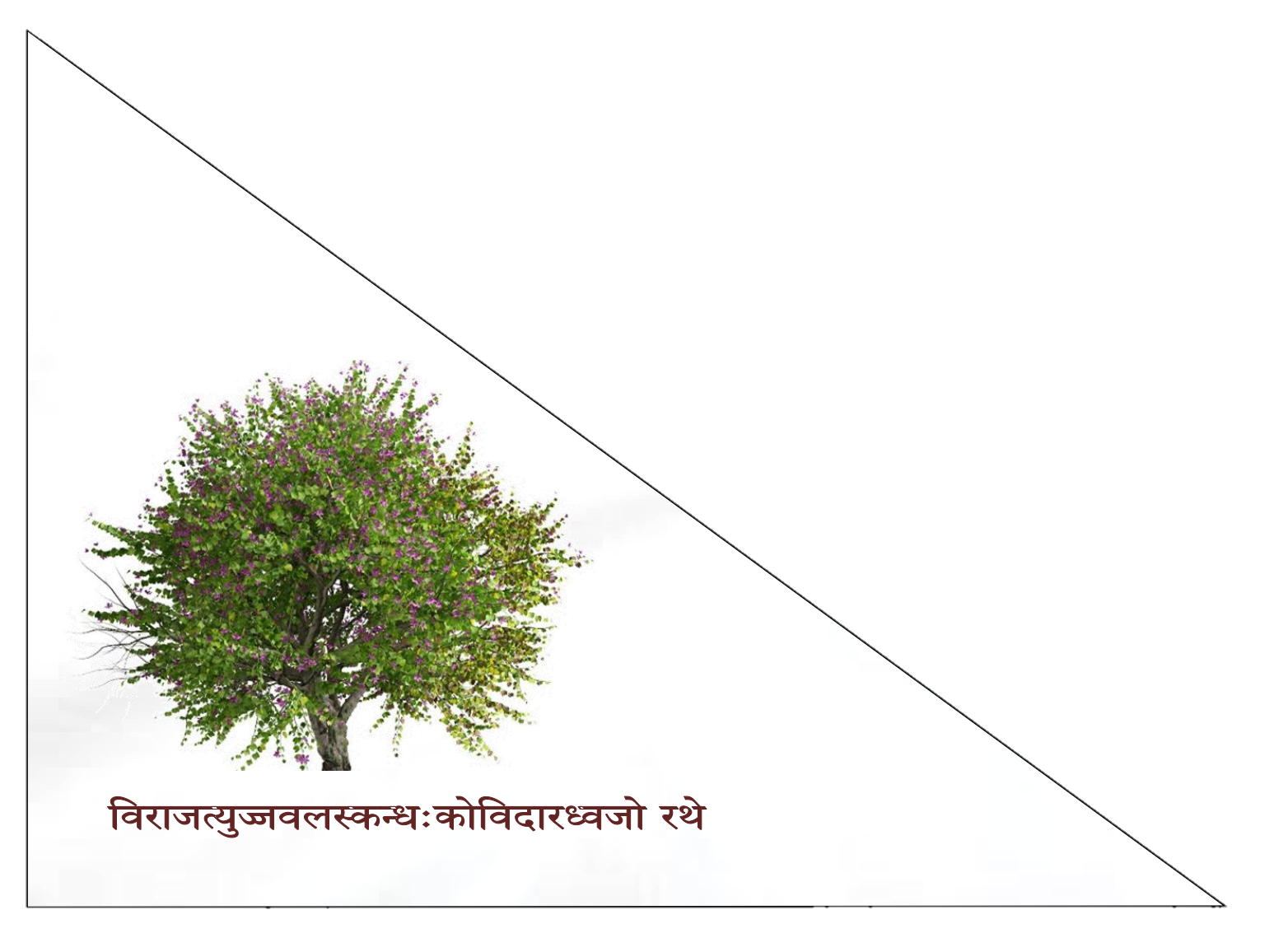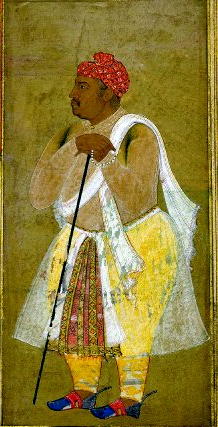|
Amber, India
Amber or Amer, is a city near Jaipur city in Jaipur district in the Indian state of Rajasthan. It is now a part of the Jaipur Municipal Corporation. The picturesque situation of Amber at the mouth of a rocky mountain gorge, in which nestles a lake, has attracted the admiration of travellers, including Victor Jacquemont and Reginald Heber. It is seen to be a remarkable example for its combined Rajput-Mughal architecture. The Amber Fort, a UNESCO World Heritage Site, is the top tourist attraction in the Jaipur area. History Amber was a Meena state that replaced Khoh as the capital of Dhundhar after Kakil Deo, the son of Dulha Rai, defeated the Meenas. The state of Jaipur was earlier known as Amber or Dhundhar and was controlled by Meena chiefs of five different tribes who were under suzerainty of the Bargurjar Rajput Raja of Deoti. Later a Kachhwaha prince Dulha Rai destroyed the sovereignty of Meenas and also defeated Bargurjars of Deoli and took Dhundhar fully under ... [...More Info...] [...Related Items...] OR: [Wikipedia] [Google] [Baidu] |
India
India, officially the Republic of India, is a country in South Asia. It is the List of countries and dependencies by area, seventh-largest country by area; the List of countries by population (United Nations), most populous country since 2023; and, since its independence in 1947, the world's most populous democracy. Bounded by the Indian Ocean on the south, the Arabian Sea on the southwest, and the Bay of Bengal on the southeast, it shares land borders with Pakistan to the west; China, Nepal, and Bhutan to the north; and Bangladesh and Myanmar to the east. In the Indian Ocean, India is near Sri Lanka and the Maldives; its Andaman and Nicobar Islands share a maritime border with Thailand, Myanmar, and Indonesia. Modern humans arrived on the Indian subcontinent from Africa no later than 55,000 years ago., "Y-Chromosome and Mt-DNA data support the colonization of South Asia by modern humans originating in Africa. ... Coalescence dates for most non-European populations averag ... [...More Info...] [...Related Items...] OR: [Wikipedia] [Google] [Baidu] |
Dulha Rai
Dulha Rai was the founder of the Kachhwaha dynasty and also the 1st king from this dynasty who ruled the territory of Dhundhar, with his capital at Khoh in present-day Rajasthan. He started his rule from Dausa which he obtained as a dowry from the Chahamanas of Shakambhari. Making Dausa as his base, he started conquering the region of Dhundhar and soon was recognised as the ruler of this region by the Chahamanas after he successfully suppressed the rebellious Bargujar Rajputs. History The Kachwaha Rajputs claim descent from Kusha, son of the legendary Rama. Their ancestors allegedly migrated from Rama's kingdom of Kosala and established a new dynasty at Gwalior. After 31 generations, they moved to Rajputana and took away the kingdom of Dhundhar from Alan Singh Chanda. Some historians associate ''Dulha Rao'', the founder of the Jaipur Kachhwaha lineage, with the Kachchhapaghata dynasty that ruled over a part of Rajasthan and Madhya Pradesh in 10th century. It is possib ... [...More Info...] [...Related Items...] OR: [Wikipedia] [Google] [Baidu] |
Times Of India
''The Times of India'' (''TOI'') is an Indian English-language daily newspaper and digital news media owned and managed by the Times Group. It is the List of newspapers in India by circulation, third-largest newspaper in India by circulation and List of newspapers by circulation, largest selling English-language daily in the world. It is the oldest English-language newspaper in India, and the second-oldest Indian newspaper still in circulation, with its first edition published in 1838. It is nicknamed as "The Old Lady of Bori Bunder", and is a newspaper of record. Near the beginning of the 20th century, Lord Curzon, the Viceroy of India, called ''TOI'' "the leading paper in Asia". In 1991, the BBC ranked ''TOI'' among the world's six best newspapers. It is owned and published by Bennett, Coleman & Co. Ltd. (BCCL), which is owned by the Sahu Jain family. In the Brand Trust Report India study 2019, ''TOI'' was rated as the most trusted English newspaper in India. In a 2021 surve ... [...More Info...] [...Related Items...] OR: [Wikipedia] [Google] [Baidu] |
Brahmins
Brahmin (; ) is a ''Varna (Hinduism), varna'' (theoretical social classes) within Hindu society. The other three varnas are the ''Kshatriya'' (rulers and warriors), ''Vaishya'' (traders, merchants, and farmers), and ''Shudra'' (labourers). The traditional occupation of Brahmins is that of priesthood (purohit, pandit, or pujari) at Hindu temples or at socio-religious ceremonies, and the performing of rite of passage rituals, such as solemnising a wedding with hymns and prayers.James Lochtefeld (2002), Brahmin, The Illustrated Encyclopedia of Hinduism, Vol. 1: A–M, Rosen Publishing, , page 125 Traditionally, Brahmins are accorded the supreme ritual status of the four social classes, and they also served as spiritual teachers (guru or acharya). In practice, Indian texts suggest that some Brahmins historically also became agriculturalists, warriors, traders, and had also held other occupations in the Indian subcontinent.GS Ghurye (1969), Caste and Race in India, Popular Prakasha ... [...More Info...] [...Related Items...] OR: [Wikipedia] [Google] [Baidu] |
Bengali People
Bengalis ( ), also rendered as endonym Bangalee, are an Indo-Aryan ethnolinguistic group originating from and culturally affiliated with the Bengal region of South Asia. The current population is divided between the sovereign country Bangladesh and the Indian regions of West Bengal, Tripura, Barak Valley of Assam, Andaman and Nicobar Islands, and parts of Meghalaya, Manipur and Jharkhand. Most speak Bengali, a classical language from the Indo-Aryan language family. Bengalis are the third-largest ethnic group in the world, after the Han Chinese and Arabs. They are the largest ethnic group within the Indo–European linguistic family and the largest ethnic group in South Asia. Apart from Bangladesh and the Indian states of West Bengal, Tripura, Manipur, and Assam's Barak Valley, Bengali-majority populations also reside in India's union territory of Andaman and Nicobar Islands, with significant populations in the Indian states of Arunachal Pradesh, Delhi, Odisha, Chhatti ... [...More Info...] [...Related Items...] OR: [Wikipedia] [Google] [Baidu] |
Shila Devi
Shila Devi Temple is a historic Hindu temple located inside the Amer Fort in Jaipur, Rajasthan. The temple is dedicated to Goddess Durga in her form as Shila Devi and is one of the prominent Shakti shrines in the region. It was established in 1604 CE by Raja Man Singh I, the general of Mughal Emperor Akbar, who brought the idol from Jessore (present-day Bangladesh) after a military expedition. History According to legend, Raja Man Singh I was advised in a dream by the goddess to recover her idol from the sea in Jessore. A slab of stone (''shila'') was found, from which the idol was carved. Hence, the deity was named "Shila Devi". The idol was installed in the temple on the sixth day of the Navratri festival in 1604 CE. Architecture and location The temple is situated within the premises of the historic Amer Fort and features typical Rajput architecture with intricately carved pillars, a sanctum sanctorum, and an idol made from a black stone slab. Devotees access the templ ... [...More Info...] [...Related Items...] OR: [Wikipedia] [Google] [Baidu] |
Jai Singh II
Sawai Jai Singh II (3 November 1688 – 21 September 1743), was the 30th Kachwaha Rajput ruler of the Kingdom of Amber, who later founded the fortified city of Jaipur and made it his capital. He became the ruler of Amber at the age of 11, after the untimely death of his father Mirza Raja Bishan Singh on 31 December 1699. Initially, Raja Jai Singh served as a vassal of the Mughal Empire. He was given the title of "''Sawai"'' by Mughal Emperor Aurangzeb before the siege of Khelna Fort in Deccan."Sawai" means one and a quarter times superior to his contemporaries. He received the title of "''Maharaja Sawai'', ''Raj Rajeshwar'', ''Shri Rajadhiraj'' " in the year 1723 which happened to be the reign of later Mughals under emperor Muhammad Shah; this was in addition to the title of "''Saramad-i-Raja-i-Hindustan"'', conferred on him on 21 April 1721.Sarkar, Jadunath (1994) A History of Jaipur, New Delhi: Orient Blackswan, , pp. 171, 173 In the later part of his life Sawai Jai Sing ... [...More Info...] [...Related Items...] OR: [Wikipedia] [Google] [Baidu] |
Kachwaha
The Kachhwaha is a Rajput clan found primarily in India. They claim descent from the Suryavanshi (Solar) dynasty. Etymology According to Cynthia Talbot, the meaning of word ''Kachhwaha'' is tortoise. Origin There are numerous theories on the origin of the Kachhwahas. Prominent of those theories are of claiming scion from the Suryavansh and the Kurma Avatar of Lord Vishnu. Suryavansh origin Suryavansh Dynasty or Ikshwaku Dynasty or Raghuvansh Dynasty : Kachwaha claim descent from mythological character Kush, a son of the avatar of mythological Vishnu, Rama, as expressed by them citing historical documents during the Supreme court of India proceedings on Ram Mandir at Ayodhya. Ish Devji a Kachhwaha Raja of outstanding merit, with his capital at Gwalior, is recorded to have died in 967 A.D. Brahmin genealogists place him as being the three hundred & third generation after Ikshwaku. The Kachhwahas of Amber are descendants of Ish Devji. According to Rima Hooja, the Kachhwahas ... [...More Info...] [...Related Items...] OR: [Wikipedia] [Google] [Baidu] |
Jai Singh I
Mirza Raja Jai Singh I (15 July 1611 – 28 August 1667) was the senior most general ("Mirza (noble), Mirza Raja") and a high-ranking mansabdar at the imperial court of Mughal Empire as well as the Kachhwaha Rajput ruler of the Jaipur State, Kingdom of Amber (later called Jaipur State, Jaipur). His predecessor was his grand uncle, Mirza (name), Mirza Raja Bhau Singh, the younger son of Mirza (name), Mirza Raja Man Singh I. Early life Jai Singh was born to Maha Singh and his wife Damiyanti, the granddaughter of Maharana Udai Singh of Mewar. Accession and early career At the age of 10, Jai Singh became the Raja of Amber and the head of the Kachhwaha Rajputs. His military career spans the full reign of Shah Jahan and the first decade of Aurangzeb's reign. Jai Singh's military career began during the accession of Shah Jahan as the Mughal emperor in 1627. Taking advantage of the change in sovereigns, Jai Singh's commander in the Deccan, Khan Jahan Lodi, rebelled with his Afgh ... [...More Info...] [...Related Items...] OR: [Wikipedia] [Google] [Baidu] |
Diwan-i-Khas (Red Fort)
The ''Diwan-i-Khas'' ( Persian: ديوان خاص), or Hall of Private Audiences, was a chamber in the Red Fort of Delhi built-in 1648 as a location for receptions. It was the location where the Mughal Emperor Shah Jahan received courtiers and state guests. It was also known as the Shah Mahal. A gate on the north side of the preceding ''Diwan-i-Am'' audience hall led to the innermost court of the palace called ''Jalau Khana'' and the ''Diwan-i-Khas''. Originally there were two enclosures on the west of the hall, one for the nobles and the other for those of a lower rank. These arcaded courts were destroyed after the Indian Rebellion of 1857. It measures 90 x 67 feet. It consists of a rectangular central chamber, surrounded by a series of arches rising from marble piers. The lower parts of the piers are inlaid with floral designs, while the upper portions are painted and gilded. The four corners of the roof are surmounted by pillared ''chhatri''. The ceiling, which was orig ... [...More Info...] [...Related Items...] OR: [Wikipedia] [Google] [Baidu] |
Raja Man Singh
Mirza Raja Man Singh I (21 December 1550 – 6 July 1614) was the 24th Raja, Kachawaha Rajput ruler of the Kingdom of Amber from 1589 to 1614. He also served as the foremost imperial Subahdar of Bihar Subah from 1587 to 1594, then for Bengal Subah for three terms from 1595 to 1606 and the Subahdar of Kabul Subah from 1585 to 1586. He served in the imperial Mughal Army under Emperor Akbar. Man Singh fought sixty-seven important battles in Kabul, Balkh, Bukhara, Bengal and Central and Southern India. He was well versed in the battle tactics of both the Rajputs as well as the Mughals. He is commonly considered to be one of the Navaratnas, or the nine (''nava'') gems (''ratna'') of the royal court of Akbar. Early life of Man Singh I He was the son of Raja Bhagwant Das and his wife Bhagawati of Amer. He was born on Sunday, 21 December 1550. Initially known as ''Kunwar'' (prince), Man Singh received the title of ''Mirza (noble), Mirza'' or ''Raja'' (King) and the rank ''Mansab ... [...More Info...] [...Related Items...] OR: [Wikipedia] [Google] [Baidu] |
Navaratnas
Navaratnāḥ (Sanskrit dvigu ''nava-ratna'', , ) refers to a distinguished assembly of nine learned and virtuous individuals who adorned the royal sabhā (court) of certain illustrious List of Indian monarchs, bhūpati-s (kings) in History of India, Bhāratavarṣa. These ''navaratnāḥ'' were revered for their unparalleled proficiency in various Shastra, śāstra-s (sciences), Indian art, kalā-s (arts), and Rule of law, neeti (statecraft). Each ''ratna'' embodied excellence in a specific field—be it kāvya (poetry), Song, saṅgīta (music), Jyotiḥśāstra, jyotiṣa (astronomy), Baidya, vaidyaśāstra (medicine), Logic, tarka (logic), or dharmaśāstra (law and ethics). Though primarily known from ''Puranas, purāṇic'' and ''History of India, itihāsic'' traditions, the concept symbolizes the ideal of a king as a patron of jñāna (knowledge) and kalā (art). The most renowned ''navaratna'' councils are traditionally associated with Vikramaditya, Vikramāditya of Ujj ... [...More Info...] [...Related Items...] OR: [Wikipedia] [Google] [Baidu] |







